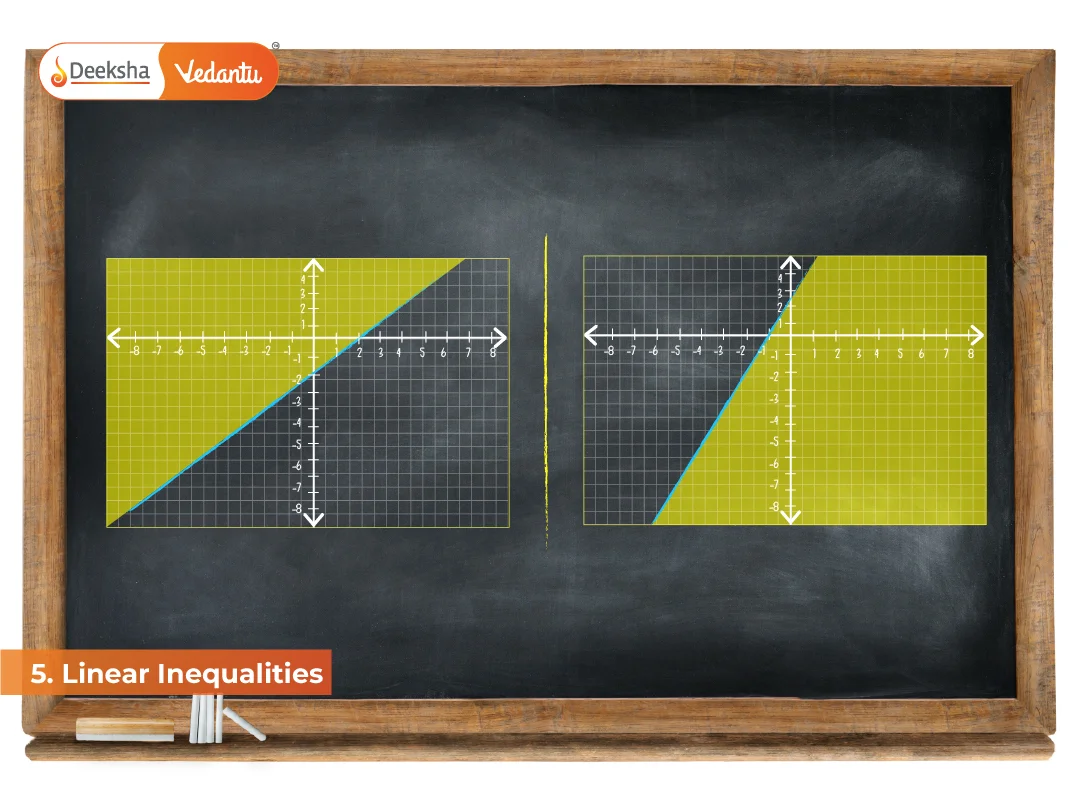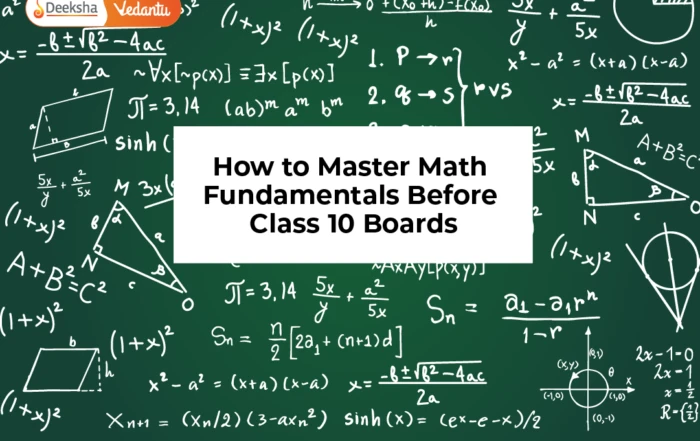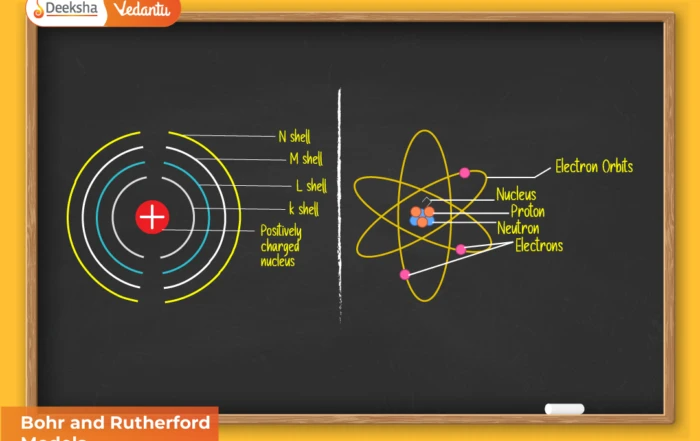
Introduction
In mathematics, equations give us precise solutions, but inequalities broaden the picture by allowing ranges of possible solutions. For instance:
- The equation x + 3 = 7 gives a single solution, x = 4.
- But the inequality x + 3 < 7 gives all real values of x < 4.
Inequalities are essential in everyday life: comparing quantities, deciding limits, or analyzing optimization problems. In mathematics, they form the base of linear programming (Class 12), play a crucial role in functions and domains, and appear in competitive exams (JEE, KCET, COMEDK) in both direct and indirect forms.
This chapter focuses on linear inequalities – inequalities where the highest power of the variable is 1. It is divided into two key subtopics:
- 5.2 Inequalities – introduction, rules, and properties.
- 5.3 Algebraic Solutions of Linear Inequalities in One Variable and their Graphical Representation – solving step-by-step and representing results visually.
5.2 Inequalities
Definition
An inequality is a mathematical statement that compares two values or expressions using symbols:
- < (less than)
- > (greater than)
- ≤ (less than or equal to)
- ≥ (greater than or equal to)
Example:
- 5 < 8 (true statement).
- x + 2 ≥ 7 means all values of x for which x + 2 is at least 7.
Types of Inequalities
- Strict inequalities – use < or >.
Example: x > 3. - Non-strict inequalities – use ≤ or ≥.
Example: y ≤ 5.
Rules of Inequalities
To solve inequalities, we use rules similar to equations, with one important difference: when multiplying or dividing by a negative number, the inequality sign reverses.
1. Addition/Subtraction Rule
If a < b, then:
- a + c < b + c
- a – c < b – c
Example: If x < 5, then x + 2 < 7.
2. Multiplication Rule
If a < b and c > 0, then ac < bc.
If a < b and c < 0, then ac > bc.
Example:
- If x < 4, then 2x < 8.
- If x < 4, then -2x > -8.
3. Division Rule
Same as multiplication: dividing by a negative reverses the inequality.
Example:
If 2x > 6, then dividing by 2 → x > 3.
If -2x > 6, then dividing by -2 (negative) → x < -3.
4. Transitive Property
If a < b and b < c, then a < c.
Example: If 2 < 5 and 5 < 9, then 2 < 9.
5. Squaring
If a, b ≥ 0 and a < b, then a² < b².
6. Reciprocals
If a, b > 0 and a < b, then 1/a > 1/b.
Examples
Example 1: Solve 3x + 4 < 10.
3x < 6 → x < 2.
Example 2: Solve -2x + 5 ≥ 1.
-2x ≥ -4. Dividing by -2 flips sign: x ≤ 2.
Exam Application (JEE/KCET/COMEDK)
- Direct inequalities (1-mark MCQs).
- Indirect: used in functions and domains (like ensuring square root ≥ 0 or denominator ≠ 0).
- Often linked with quadratic inequalities.
Marks Distribution
- Boards: 2–3 marks direct questions.
- JEE Main: 1 question (~4 marks, often via quadratic).
- KCET/COMEDK: 1 question (1 mark, speed-based).
5.3 Algebraic Solutions of Linear Inequalities in One Variable and their Graphical Representation
General Form
A linear inequality in one variable has the form:
ax + b < c or ax + b ≥ c
where a, b, c are real constants and a ≠ 0.
Steps to Solve
- Simplify the inequality.
- Isolate the variable.
- Reverse sign if multiplying/dividing by negative.
- Write a solution in interval form.
- Represent the solution graphically.
Graphical Representation on Number Line
- x > a → open circle at a, shade right side.
- x ≥ a → closed circle at a, shade right side.
- x < a → open circle at a, shade left side.
- x ≤ a → closed circle at a, shade left side.
Example:
Solve 2x – 1 ≥ 3.
2x ≥ 4 → x ≥ 2.
Graph: closed circle at 2, shading rightwards.
Worked Examples
Example 1: Solve 5x – 7 < 3.
5x < 10 → x < 2.
Graph: open circle at 2, shading left.
Example 2: Solve 2 – 3x ≥ -4.
-3x ≥ -6 → dividing by -3 flips sign → x ≤ 2.
Example 3 (JEE type): Solve |2x – 1| < 3.
Two cases:
- 2x – 1 < 3 → x < 2.
- 2x – 1 > -3 → x > -1.
Solution: -1 < x < 2.
Interval Notation
- x > 2 → (2, ∞).
- x ≥ 2 → [2, ∞).
- x < -1 → (-∞, -1).
- -1 < x < 2 → (-1, 2).
Applications in Exams
- Board exams: direct “solve and graph” problems.
- JEE: domain/range problems, quadratic inequalities.
- KCET/COMEDK: quick check inequalities in objective problems.
Practice Problems
- Solve and represent: 3x + 2 > 8.
- Solve: -2x + 5 ≤ 1.
- Solve: |x – 4| ≥ 3.
- Find the interval for which (2x – 1)/(x + 3) > 0.
- Solve for x: 2x² – 5x + 2 ≥ 0.
FAQs
Q1. What’s the difference between linear equations and linear inequalities?
Equations have exact solutions; inequalities give ranges.
Q2. Why do we flip inequality sign when multiplying/dividing by a negative?
Because the direction of inequality changes when order is reversed.
Q3. Are inequalities important for JEE?
Yes — they appear indirectly in functions, domain restrictions, and quadratic questions.
Q4. How are solutions represented graphically?
On a number line with open/closed circles and shading.
Q5. What’s the mark’s weightage?
- Boards: ~3 marks.
- JEE: ~4 marks (1 problem).
- KCET/COMEDK: ~1 mark.
Summary and Key Takeaways
- Inequalities generalize equations by describing ranges instead of exact values.
- Rules are similar to equations, but flipping the inequality when multiplying/dividing by negative is crucial.
- Solutions are expressed in interval notation and represented graphically.
- This chapter builds foundation for Class 12 Linear Programming and higher algebra topics.
- Marks weightage: Boards (3–4), JEE (4), KCET/COMEDK (1).











Get Social